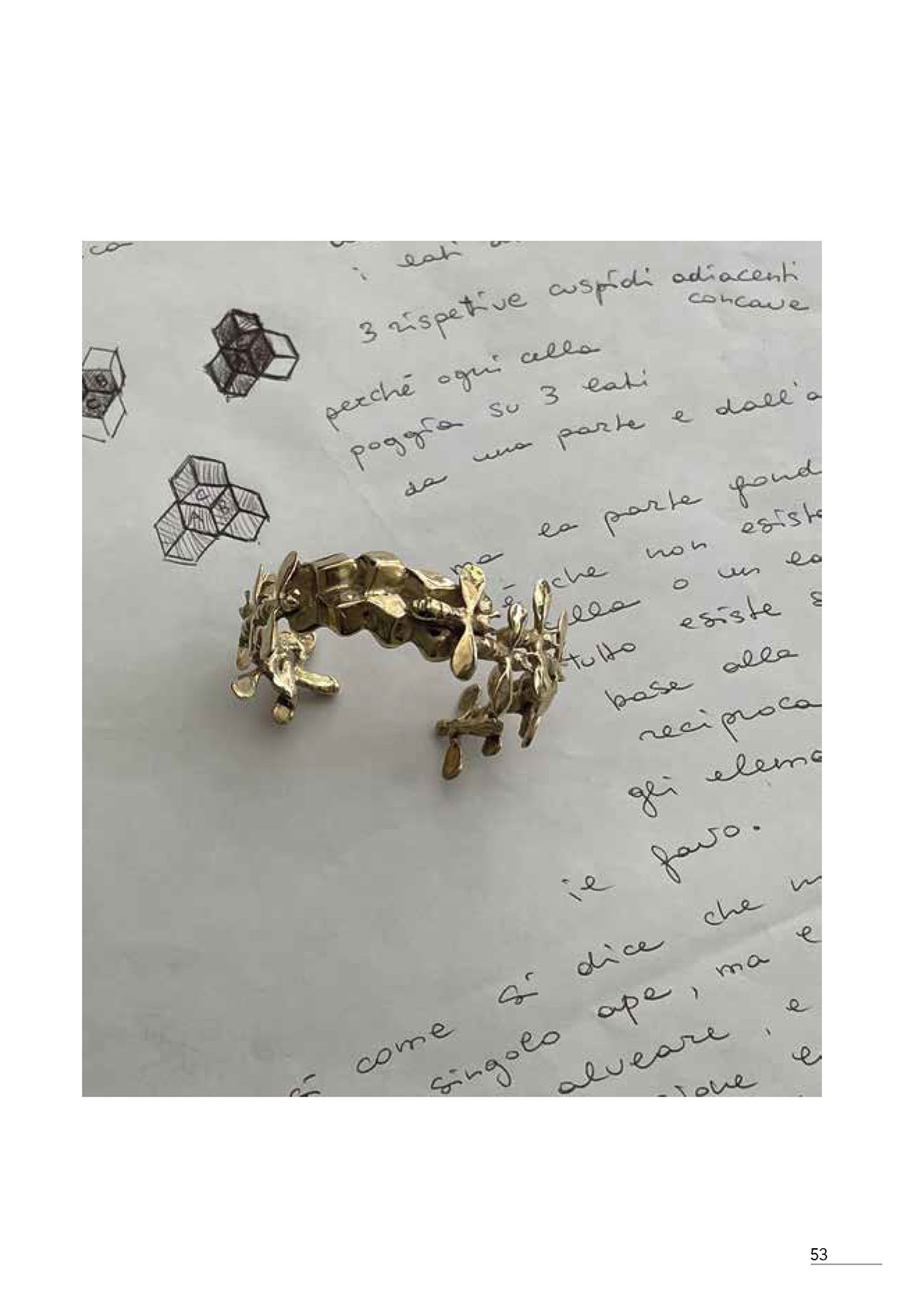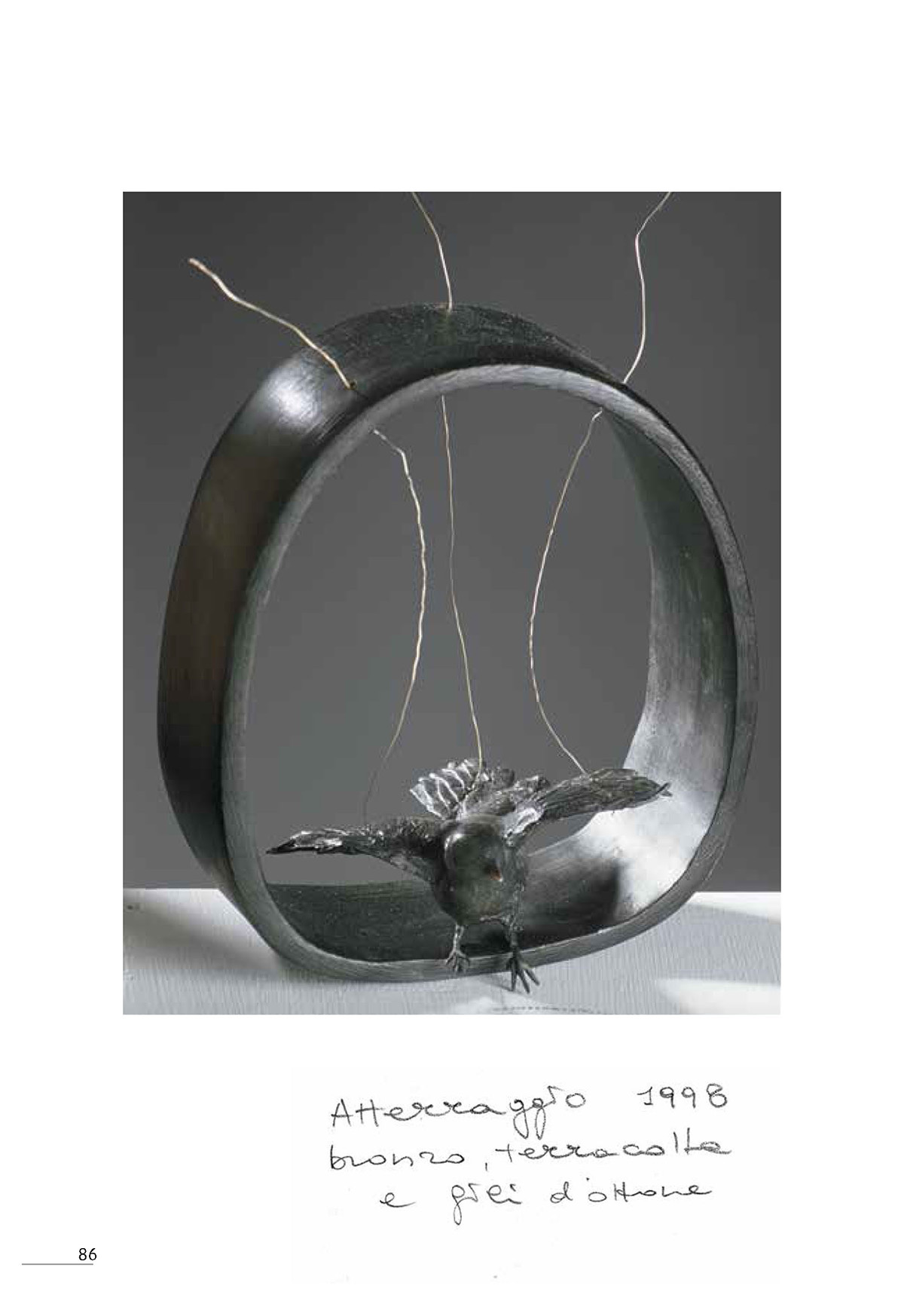Descrizione



The Honeybee
Dennis L. Merritt
Those amazing honeybees! They’re impressive for many reasons, starting with the fact that they are insects and especially social insects. The worker bee is a unique creature, having the morphology and biochemical apparatus to build, maintain, feed a colony and produce honey. Our human psyches have responded to honeybees with a delightful range of mythic and symbolic associations going back through the ages, but the current health of bee colonies is warning us about our deteriorating environment.
Insects are the most successful multicellular life forms in that they comprise an estimated 80% of what may be at least 10 million species on the planet. Their small size and variable physiologies enable them to inhabit an endless variety of habitats. Having their skeletons on the outside of the body protect the organs within plus allows for an infinite variety of shapes and colors: some insects look like leaves, others like walking sticks. A species may feed on one type of food in its youth while an adult form, especially if it can fly like a butterfly, can disperse widely and have a totally different pallet.
Insects with a complete metamorphosis, like the butterfly, have forever fascinated us and indeed is a Christian symbol for the Easter Resurrection.
Our honeybee is a member of an elite group of social insects that also includes the social wasps, stingless bees, ants, and termites. They make up just 2% of the insect species yet comprise 75% of insect biomass, establishing them as a major component of most ecosystems. Social insects work together for the benefit of the whole: harvesting food, raising the next generation, building the structures to house and feed themselves, defending their space we humans are impressed by such organization. The insect “brain” is not much more than an assortment of nerve ganglia, but social insects function as a superorganism with all individuals working together as if they were a single body. This remarkable behavior is described with the mathematics of complexity theory: individuals above a certain minimum number with each member performing relatively simple tasks of different sorts generate very complex behaviors at the group level. (Sawyer 2005)
There are three types of bees in a hive that may have from 20,000 to 80,000 individuals—a single fertile queen, male drones, and worker bees. The queen is a larger than the worker bee, and after a brief mating flight where she mates with several males, she stores up the sperm and returns to the hive to spend the rest of her days being an egg-laying machine, producing up to 2000 eggs a day. The male drones are also larger and result from unfertilized eggs: they have only half a set of chromosomes (haploid). Their sole purpose is to mate and then they die. Those that haven’t mated are expelled from a hive before winter. All the work falls upon the frenetic activity of the worker bees whose functions include building the honeycombs, providing the food for developing bee larvae, maintaining and guarding the hive, and collecting nectar and processing it to produce that divine product honey.
The worker bee is little chemical factory making five products essential for the life of the hive. Propolis (“bee glue”) is used to construct the hive, seal cracks, and line the frames with this anti-bacterial substance.
It is resin-like and produced by taking sticky material from buds of popular trees, cone-bearing trees or bark, and mixing it with wax flakes (beeswax). Beeswax is made by combining honey with fats and secreting the wax through four paired glands on the underside of the abdomen. It is kept in the mouth to maintain it in working condition because it hardens when exposed to air. The honeycomb is usually started by many bees linking their legs together to form a cluster on the frame or edge of a cone, then molding beeswax into cylinders the width of their bodies. Vibrating their big flight muscles generates heat that melts the wax causing the cylinders to naturally form the straight lines of the hexagonal chambers (for example, bringing two bubbles together will produce a straight line along contact points).
(“Construction and Architecture of Honeycombs”) Hexagons are the optimum use of space using the least amount of material. Royal jelly is produced by special glands in the worker bees head located below the pharynx (like the tubular space between the back of our nasal cavity and the esophagus).
It is mostly water containing proteins, sugars, lipids, and a small amount of mainly B-complex vitamins plus antioxidants. A queen bee arises from a fertilized egg in a slightly larger hexagonal cell and is fed entirely on royal jelly. Worker and drones are fed royal jelly for the first three days of their 18-24 day development period and fed bee bread after that.
Bee bread is a mixture of pollen, nectar and bee saliva plus a chemical that keeps the workers sterile.
And so we arrive at how bees produce the “food of the gods” honey.
A worker bee, which lives only about two weeks in the summer, will sip nectar from up to 1000 flowers to fill its honey stomach, the first of its two stomachs that will weigh almost as much as the bee when full. Digestive enzymes work on the nectar on the way back to the hive with additional
enzymes added from each bee as the nectar is regurgitated and passed along a series of bees until deposited in a honey cell.
The enzymes turn long chain sugar molecules into simple monosaccharides like glucose and fructose. Bees fan this product to reduce the water from 70% to less than 20% before the honey cell is capped so the enzyme-rich bee regurgitations can complete the transformation into honey.
The low water content and acidic pH is not good for the growth of bacteria and yeast, giving honey its long shelf life.
To make a pound of honey takes about 10,000 bees flying about 75,000
miles (over 3 times around the earth) and visiting up to 8 million flowers. One hive can produce up to 7 pounds of honey a day and only a quarter of the honey produced is needed for the bees to survive.
And then there is the famous “bee dance” where a forager bee communicates to her sisters where a good nectar source has been discovered. She does a circle dance if the flowers are within 50 to 100 meters of the hive.
The Austrian Karl von Frisch first described the waggle dance used to communicate locations beyond 100 meters.
(Munz 2017) The bees do a figure 8 dance flattened in the middle and waggle their abdomens along the straight line of the flattened 8, the line pointing in the direction of the food source based on the angle to the sun. The longer the waggle line, the further away the food; the more excited the bee, the better the food. The scent of the flowers on the bee also helps identify the food source. The bees can determine the direction and time of day by the polarization of light in the blue sky even without the sun shining.
The bees’ activities and their marvelous product has forever captivated the human psyche. The ancient bee-keeping Egyptians saw the honeybee as a creature that transformed the sun’s warmth into golden sweetness. The Hindu gods Indra, Krishna and Vishnu were called “nectar born” and honey was associated with the bliss of nirvana. Christ was referred to as the “honey in the rock” divine essence housed in an earthly vessel. Honey and the honey comb have been associated with divine wisdom and a touch of honey on the tongue could inspire poetry, soothsaying and prophesy. Honey was poured over the hands and tongues of initiates in the ancient mystery religions as a sign of new life and transformation. (Ronnberg and Martin 2010, p. 228, 230) Bees also symbolize rulers and cultural heroes because they bring order and prosperity to a society. There are many associations of bees with the great mother goddess.
Demeter, the Greek goddess of crops and harvests, was worshipped as “the pure mother bee” and her Thesmophoria festivals had honey cakes shaped like female genitals. A golden honeycomb was the symbol for Aphrodite at Eryx and her priestess’s name was Melissa, “Queen Bee”. (Walker 1983, p. 407) Deborah, meaning “bee”, was a Jewish queen, prophet and leader who inspired the Israelite army to defeat the Canaanites. And so it goes on across many cultures and time periods.
It is sign of our times that these marvelous creatures have become one of many indicators that humans have violated the laws of nature and are beginning to face dire consequences. Bees and the flowering plants have millions of years of evolutionary history of a symbiotic relationship over 1/3 of our table food comes from plants pollinated by bees but a mysterious phenomenon called Colony Collapse Disorder has frightened beekeepers and farmers since 2006. It happens to over 30% of the colonies that worker bees simply abandon a colony and go off to die, leaving behind a queen, honey, and immature bees. No one cause has been found, but probably a combination of parasites and pests, pathogens, poor nutrition, fungicides, Glyposate weed killer, and sublethal exposures to pesticides, with neonicotinoids now restricted or banned in many places in Europe and America.
(Amadeo, February 23, 2022) Climate change is also affecting honeybees as with so many other species. (Pham, April 9, 2022)
Those amazing bees are trying to tell us something is out of sorts in our relationship with them and in a broader sense, to the Great Mother Goddess. It’s time to wake up, figure out what the problems are, and take action.
References:
Amedeo, K. February 23, 2022. “Colony Collapse Disorder and its impact on the economy”. The Balance. https://www.thebalance.com/bee-colony-collapse-disorder-facts-and-economic-impact-3305815
“Construction and architecture of honeycombs”. Good Honey Guide.com.
Munz, T. 2017. The Dancing Bees: Karl von Frisch and the Discovery of the Honeybee Language. Chicago, IL: University of Chicago Press.
Pham, A. April 9, 2022. “Climate change threats against the honeybee and endangered bee species”. Earth.org. https://earth.org/climate-change-threats-against-the-honey-bee-and-endangered-bee-species/
Ronnberg, A. and Martin, K (eds.). 2010. The Book of Symbols: Reflections on Archetypal Images. Cologne, Germany: Taschen.
Sawyer, K. 2005. Social Emergence: Society as Complex Systems. Cambridge, England: Cambridge University Press.
Walker, B. 1983. The Woman’s Encyclopedia of Myths and Secrets. San Francisco: Harper.




